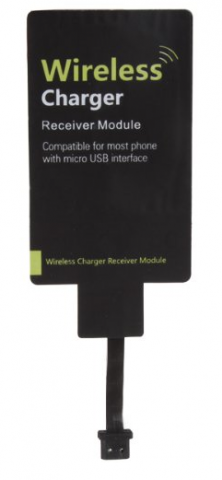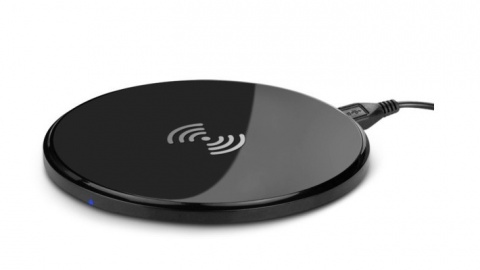-
Hemanth H Iyer
18th Apr 2016
When Samsung introduced its Galaxy S6 as the smartest of smartphones as it could charge without a charger, the world woke up and took notice. In fact, the Korean giant even cocked a snook at rival Apple by showing the iPhone’s inability to charge without a wire.
The television commercial made all those folk who bought phones with chargers look downright stupid, often getting stuck on the wrong side of the bed or walking around with coils of cable to charge their phone. Samsung even openly took a potshot at Apple in their commercial shown in the United States.
So, what exactly is this wireless charging all about? We took some time to to hark back at our physics text books (like the 3 Idiots experiment with electricity and urine) and here is what we found…
How does it work?
Wireless chargers (also known as “inductive charging”) typically use an induction coil to create an alternating electromagnetic field from within a charging base station, and a second induction coil in the portable device takes power from the electromagnetic field and converts it back into electric current to charge the battery.
Wireless Charging Standards
- Qi (pronounced chee) from the Chinese word meaning "natural energy" is an interface standard developed by the Wireless Power Consortium
- PMA / Powermat, a wireless power standard promoted by the Power Matters Alliance
- Rezence, a wireless power standard promoted by the Alliance for Wireless Power
Which devices use it?
As on date, we counted as many as 33 smartphone models that work with wireless charging devices. In case you want to know more, read the list right below:
1.HTC Droid DNA
2.HTC Droid Incredible 4G LTE
3.HTC Droid Incredible 2
4.HTC Rezound
5.LG G3
6.LG G3 Prime
7.LG G3 Cat 6
8.LG G4
9.LG Optimus G Pro 2
10.LG Optimus G Pro
11.LG Spectrum
12.LG Optimus
13.LG Lucid 2
14.Google Nexus 4
15.Google Nexus 5
16.Google Nexus 6
17.Motorola Droid Maxx
18.Motorola Ultra M
19.Motorola Droid Bionic
20.Motorola Droid Turbo
21.Samsung Galaxy Note 2
22.Samsung Galaxy Note 3
23.Samsung Galaxy Note 4
24.Samsung Galaxy Note Edge
25.Samsung Galaxy S3
26.Samsung Galaxy S4
27.Samsung Galaxy S5
28.Samsung Galaxy S6
29.Samsung Galaxy S6 edge
30.Samsung Galaxy S6 active
31.Sony Xperia Z3
32.Sony Z3v
33.YotaPhone 2How can you manually add it to your phone?
As stated above there are a few wireless charging technologies made by different manufacturers that all rely on the same physical concept but they are not cross-compatible, you cannot mix coils and docks.
Therefore, all you need to do buy the relevant product from some online shop and connect it to your device. Here is how you do it…

The steps stated below are for a Qi Wireless Charger
1.Plug in a compatible microUSB Wireless Charging Receiver Module into your phone or tablet’s microUSB port
2.Wrap the receiver module around the back of the device and secure it
3.Place your device and the connected receiver module inside a protective case
4.Lay your device on a compatible Qi wireless charger
5.Your device should have wireless charging!
So why do not all phones have this?
I am sure you are wondering “If it was this easy, why haven’t more device manufacturers incorporated wireless charging?” Here is why several manufacturers of smartphones think twice before using the technology:
- Lower efficiency: The main disadvantage of inductive charging is its low efficiency, which means that it consumes both time and electricity but does not actually do a great job of charging the device.
- Slower charging: Due to the lower efficiency, devices can take longer to charge when supplied power is the same amount. This could become a headache for the corporate hotshots who move from city to city and require to plug in anywhere, any time.
- Expensive: Inductive charging also requires drive electronics and coils in both device and charger, increasing the complexity and cost of manufacturing. At a time when costs are becoming critical to buying decisions, would smartphone makers really want to give a piece of technology that isn’t really worth it?
Samsung GALAXY S6, wireless charging, Google Nexus 5, LG Optimus G Pro, Rezence
Wireless Charging: It Isn’t Rocket Science | TechTree.com
Wireless Charging: It Isn’t Rocket Science
What’s more? It isn’t even as smart as it is made out by some manufacturers
News Corner
- DRIFE Begins Operations in Namma Bengaluru
- Sevenaire launches ‘NEPTUNE’ – 24W Portable Speaker with RGB LED Lights
- Inbase launches ‘Urban Q1 Pro’ TWS Earbuds with Smart Touch control in India
- Airtel announces Rs 6000 cashback on purchase of smartphones from leading brands
- 78% of Indians are saving to spend during the festive season and 72% will splurge on gadgets & electronics
- 5 Tips For Buying A TV This Festive Season
- Facebook launches its largest creator education program in India
- 5 educational tech toys for young and aspiring engineers
- Mid-range smartphones emerge as customer favourites this festive season, reveals Amazon survey
- COLORFUL Launches Onebot M24A1 AIO PC for Professionals







TECHTREE